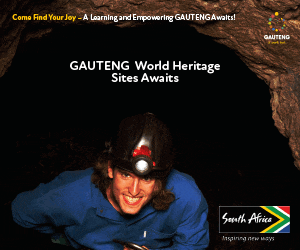5 Major Announcements from Joburg’s 2025 State of the City Address

Johannesburg’s Executive Mayor, Dada Morero, delivered his first State of the City Address (Soca) on 7 May 2025, outlining a sweeping recovery plan for a city facing deep-rooted crises. Speaking from the Connie Bapela Council Chamber in Braamfontein, Morero painted a picture of Joburg at a crossroads — dealing with decaying infrastructure, financial instability, crime, and unreliable service delivery. His response? A bold, multi-pronged turnaround strategy, including the introduction of a so-called “bomb squad” to dismantle key obstacles and restore functionality to South Africa’s economic powerhouse.

ALSO READ: Gauteng Launches Health Drive to Support Ex-Mineworkers With Medical Assessments
1. Introducing Jozi’s ‘Bomb Squad’
One of the standout announcements from Morero’s address was the launch of a high-impact implementation team dubbed the “bomb squad.” Led by ANC stalwart Snuki Zikalala, the team will target constraints obstructing progress in governance, service delivery, and infrastructure development.
“In military terms, a bomb squad identifies and defuses threats before they explode,” Morero explained. “Our bomb squad must remove constraints that hinder Joburg’s transformation into the city we want to see.”
This unit is part of a broader intervention to reignite Johannesburg’s economy and ensure long-term financial sustainability. It complements national efforts, including President Cyril Ramaphosa’s recent visit and the deployment of Operation Vulindlela, to arrest Joburg’s rapid decline.
2. R3 Billion Investment in Underserved Communities
Morero’s administration has committed to improving living conditions in eight of the city’s most neglected areas: Diepsloot, Southern Farms, Ivory Park/Kaalfontein, Orange Farm, Soweto, Riverlea, Zandspruit and Eldorado Park. The city has earmarked R3.03 billion within its Medium-Term Revenue Expenditure Framework to address infrastructure decay and boost economic resilience in these communities.
3. Reviving the Inner City
Another cornerstone of Morero’s vision is the revitalisation of Johannesburg’s inner city. Historically the heartbeat of Joburg’s commercial and social life, the central business district has deteriorated due to crime, abandoned buildings, and inadequate maintenance.
The revitalisation strategy includes upgrading essential infrastructure, rehabilitating hijacked buildings, improving lighting, and fostering security. Areas set to benefit include Marshalltown, Hillbrow, Jeppestown and Braamfontein. The ultimate aim, Morero stated, is to reposition the inner city as the economic epicentre of the Gauteng city-region.
“The inner city is not just being restored — we are transcending urbicide,” he declared. “We are reclaiming Joburg’s soul. This is personal.”
4. Electricity Crisis: High Tariffs and Infrastructure Woes
Electricity remains one of Joburg’s most pressing concerns. While residents and industrial users face frequent outages, they’re also grappling with rising electricity costs. The controversial R200 surcharge fee has been a particular point of contention, and although Morero previously hinted at its removal, he made no mention of it during the address.
Instead, he offered relief for industrial users and reaffirmed the city’s ambition to reduce dependence on Eskom. The recommissioning of a 50MW open-cycle gas turbine at the John Ware Substation marks a step toward energy diversification.
Furthermore, R296 million has been allocated to extend legal electricity access to informal settlements in Diepsloot, Orange Farm, Ivory Park, and Kya Sands — connecting more households while paving the way for broader service upgrades.
5. Waste Management and the Circular Economy
Pikitup, Johannesburg’s primary waste management service, continues to battle operational inefficiencies, landfill shortages, and fleet challenges. To combat this, Morero unveiled plans to enhance waste infrastructure by upgrading the city’s landfill sites — Goudkoppies, Marie Louise and Robinson Deep — and establishing material recovery facilities and biodigesters.
However, looming deadlines present challenges: Marie Louise and Ennerdale landfills are expected to reach full capacity by year’s end, while Goudkoppies and Robinson Deep could be maxed out by 2026. The city must move swiftly to ensure these upgrades are both timely and sustainable.
A Missed Opportunity: Water Infrastructure Neglect
Despite acknowledging the importance of water security, Morero’s speech offered few concrete solutions for Johannesburg’s ongoing water crisis. With 20 of the city’s reservoirs in disrepair and widespread leakage due to ageing pipes, residents have faced frequent supply interruptions.
While Morero mentioned an R40.3-million-dollar project to build a 10-megalitre reservoir in Carlswald and hinted at using AI to detect leaks, critics argue that these measures fall short. Civil society voices like WaterCAN’s Dr Ferrial Adam have called for a more urgent and focused approach to repairing the city’s ailing water infrastructure.
Promising Plans, Demanding Execution
Mayor Dada Morero’s address signals a new direction for Johannesburg, grounded in strategic investment, targeted interventions, and renewed political will. From the deployment of the bomb squad to inner-city revitalisation and waste infrastructure upgrades, the proposals are ambitious and necessary.
Yet, successful implementation will require more than rhetoric. With mounting pressure from residents, civil society, and the national government, the City of Johannesburg cannot afford half-measures. The months ahead will be critical in determining whether Morero’s plans can deliver meaningful change or become yet another set of empty promises in the city’s troubled political history.




